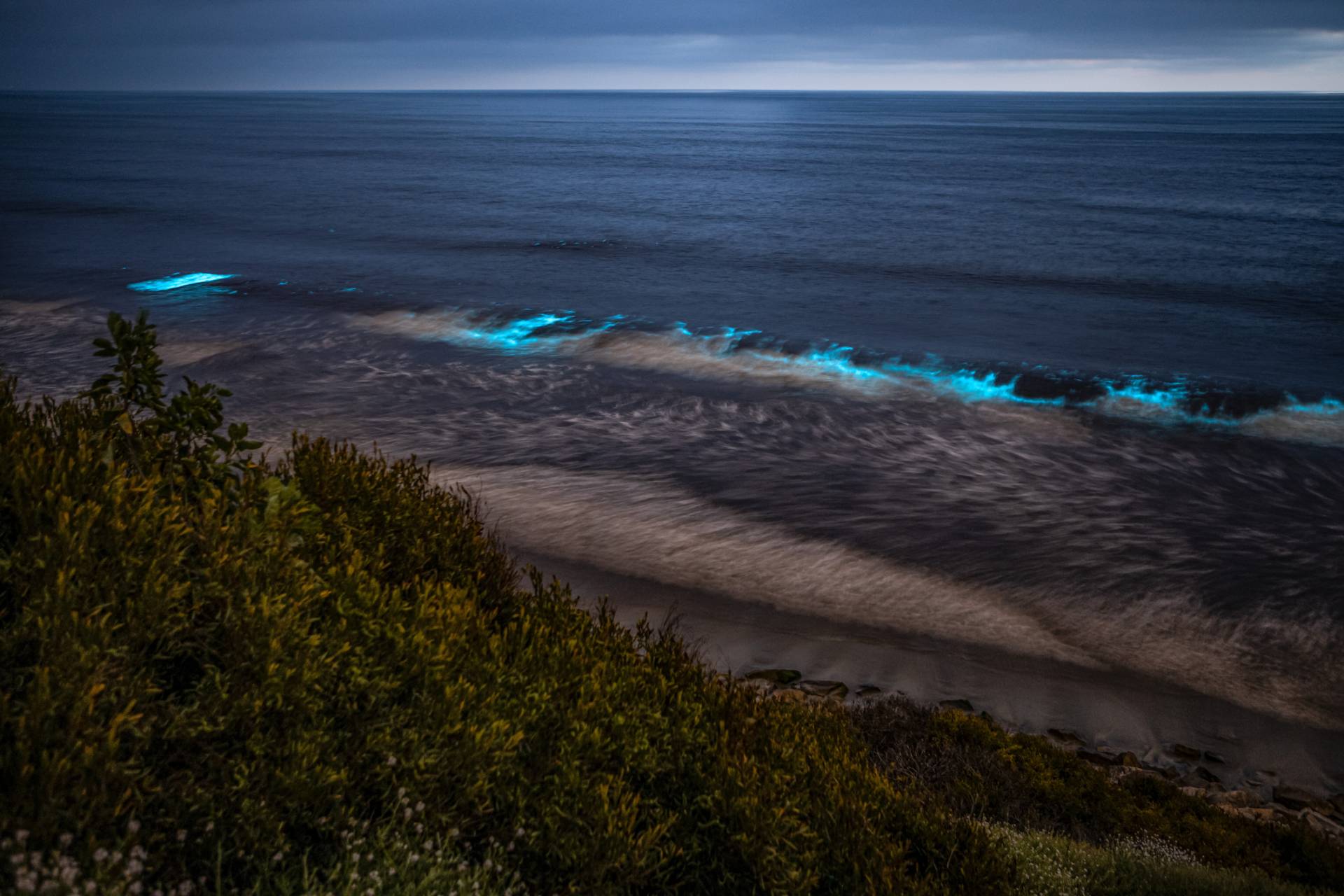The two most common spots to check out bioluminescence are Tomales Bay in Marin County and Moss Landing in Monterey Bay where you can take advantage of a number of bioluminescent tours organized by kayaking companies.
In Santa Cruz county, residents have spotted bioluminescence on the shores of Manresa State Beach in Aptos, Seacliff State Beach, Rio Del Mar State Beach, Shark Fin Cove in Davenport, Platforms Beach and Sumner Beach in Aptos. Big Sur near Bixby Bridge has been known to produce bioluminescence in 2018.
For folks who want to experience this event with others, Haddock advises checking out kayaking companies that offer bioluminescence tours. Bay Area kayak companies like Kayak Connection and Blue Waters Kayaking offer bioluminescence tours every year from June until around November.
What’s it like to go on one of these bioluminescence tours via kayak — especially if you’re already a science lover? Bay Area scientist Nuur Shaikh, who majored in biology in college, recently accompanied almost 20 other friends on a bioluminescence tour in Moss Landing, Santa Cruz, where the tour guides brought them to the bioluminescent hot spots in Elkhorn Slough.
“The current was basically pulling us toward the hot spots. We didn’t really have to row or anything,” she said.
On the way to the bioluminescent hot spots, Shaikh and her group passed by patches of algae. “So you could pick up a piece of algae and you can kind of see the [bioluminescent] plankton that’s stuck on those strands,” she said.
When she twirled her fingers in the water, she said the water would light up for a microsecond, making it look like glitter.
“They kind of sparkle a little,” she said. “They look like fairy dust.”
Tell us: What else do you need information about?
At KQED News, we know that it can sometimes be hard to track down the answers to navigate life in the Bay Area in 2023. We’ve published clear, practical explainers and guides about COVID, how to cope with intense winter weather and how to exercise your right to protest safely.
So tell us: What do you need to know more about? Tell us, and you could see your question answered online or on social media. What you submit will make our reporting stronger, and help us decide what to cover here on our site, and on KQED Public Radio, too.
